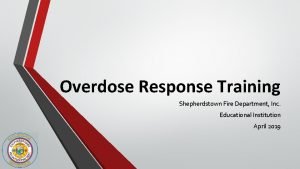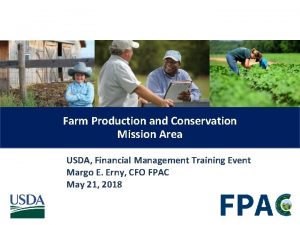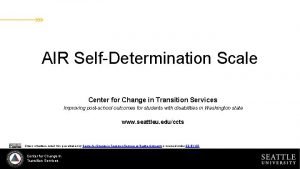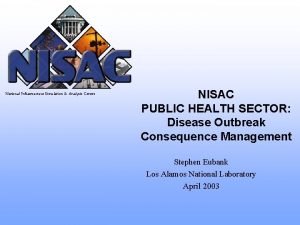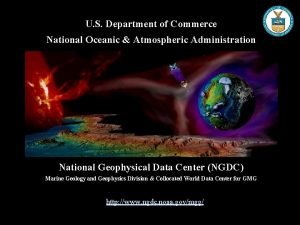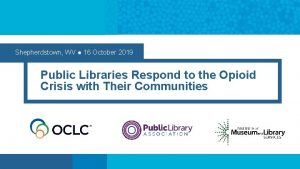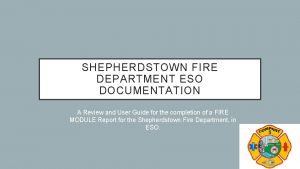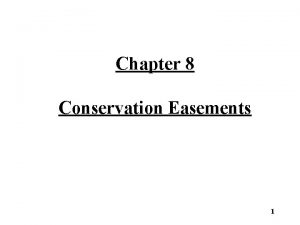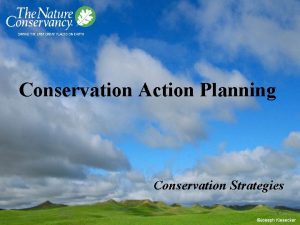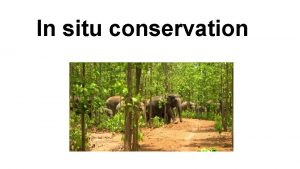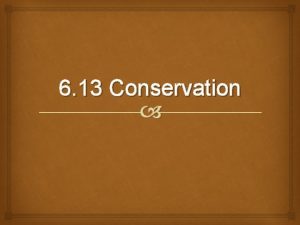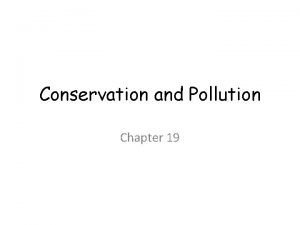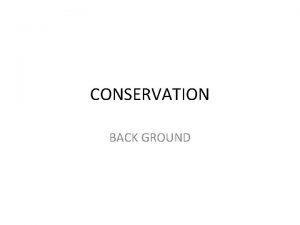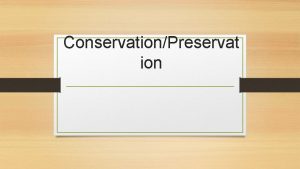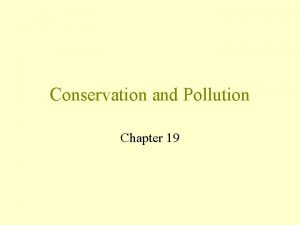Drivers of Change National Conservation Training Center Shepherdstown

































- Slides: 33

Drivers of Change National Conservation Training Center Shepherdstown, WV 10 August 2004 Anthony C. Janetos Vice President The Heinz Center

Drivers of Change • Four main drivers to address: – Climate change – Water quantity and quality – Invasive species – Impacts of biotech/bioengineering • I will add two more to think about: – Land-use change – Population pressure

So What? • Why should we care? • Ethical concerns for conservation and preservation of natural heritage • Practical concerns for delivery of ecosystem services: fiber, food, water, soil fertility, atmospheric composition and climate, biological diversity • Both priced and unpriced services


Drivers • Overall goal: Conserving biodiversity by sustaining ecological functioning • What are the main scientific issues for each driver? • What are potential consequences for biodiversity/ecosystem functioning? • Personal view for each

Climate Change • Major challenge over next several decades • Changes in atmosphere welldocumented • Changes in ecology beginning to be documented • What can we adapt to?

Global CO 2 Concentration CO 2 concentration (ppm) 360 340 320 300 280 260 800 1000 1200 1400 1600 1800 2000

Storage in Atmosphere: 3. 3 ± 0. 2 Fossil Fuel Plus Cement Production: 6. 3 ± 0. 6 Terrestrial Uptake Inferred Sink: 2. 3 ± 1. 3 Net Emissions from Tropical Land-Use Change: 1. 6 ± 0. 8 Ocean Uptake: 2. 3 ± 0. 8 Decade of the 1990’s








General Comparisons with IPCC • Agriculture more vulnerable in developing world • As much as a third of forested ecosystems vulnerable to some degree • Health risks also appear asymmetrical • Developing countries appear to be more vulnerable to the same degree of atmospheric change • Even developed countries have significant vulnerabilities

Challenges • Ecosystem response to multiple stresses, climate change in a broader context • Degree to which CO 2 fertilization operates • Dependencies of impacts on particular CO 2 concentrations • Costs and effectiveness of adaptation strategies • Interaction of domestic and international effects • Linkages to other issues, especially losses of biological diversity

Water Quantity and Quality • Concerns over water issues differ from region to region • Some indication in precipitation data of increase in extreme events • Anthropogenic water use not as well understood as we might like • Monitoring for quality not as comprehensive as we need • Conflicts between human use and use in/by ecosystems





Invasive Species • Already an important management issue within US • Annual economic impacts measured in hundreds of $$ billions • Now understand that invasives rank second only to habitat loss as driver of extinction trends • Monitoring, prevention, control

Biotechnology/Bioengineering • Most of the public focus has been on GMO foods • But understand relatively little about potential for gene exchange from released organisms (plants or animals) • Focus on what the traits are, not so much how they were produced

Land-Use Change • Biggest changes over past 40 -50 years • Acknowledged to be the biggest contributor to losses of biological diversity • What sort of changes can we document over the past few decades? • What changes might be in store for US?

Main areas of deforestation and forest degradation over the last twenty years (1980 -2000) - World

Main areas of degraded land over the last twenty years (1980 -2000) - World

Main areas of change in cropland extent - World

Population Pressure • In excess of 6 billion people globally • Projections of population today have two characteristics: – Top out around 8 -9 billion in next 50 years – Stay fairly steady • Most growth in developing world, BUT • US has shown 2 -3% growth per year

Population density in 1995 and most populated and changing cities in 1990 -2000 - world

Energy in Today’s World Fossil fuels drove most of the growth & were almost 80% of supply in 2000.

Some Closing Thoughts • These drivers clearly have potential to influence ability to preserve biodiversity and ecosystem function • Need to document and understand the drivers themselves • Need to develop both adaptive and mitigative strategies based on best science

Closing Thoughts 2 • Development of indicators of change necessary • Periodic reporting on state of diversity and ecosystem functioning/characteristics • Periodic assessment of state of knowledge and understanding
 Shepherdstown fire department
Shepherdstown fire department Toolbox talks for drivers
Toolbox talks for drivers Gsa fleet drive thru
Gsa fleet drive thru Farm production and conservation
Farm production and conservation Painting the wall physical change or chemical change
Painting the wall physical change or chemical change Chemical chnages
Chemical chnages Absolute change and relative change formula
Absolute change and relative change formula What is an integer
What is an integer Difference in physical and chemical changes
Difference in physical and chemical changes A change in supply vs a change in quantity supplied
A change in supply vs a change in quantity supplied Supply and demand curve shifts
Supply and demand curve shifts Enagic comp plan
Enagic comp plan Proactive and reactive change
Proactive and reactive change Which is an example of a physical change
Which is an example of a physical change Spare change physical versus chemical change
Spare change physical versus chemical change Rocks change due to temperature and pressure change
Rocks change due to temperature and pressure change Whats the difference between physical and chemical change
Whats the difference between physical and chemical change How does a physical change differ from a chemical change? *
How does a physical change differ from a chemical change? * Baking chemical change
Baking chemical change First order vs second order change
First order vs second order change Is chopping wood physical or chemical change
Is chopping wood physical or chemical change Climate change 2014 mitigation of climate change
Climate change 2014 mitigation of climate change Climate change national security threat
Climate change national security threat National unification and the national state
National unification and the national state Center for change in transition
Center for change in transition Tfolio
Tfolio Center for change in transition services
Center for change in transition services Bruce agins
Bruce agins National center for credibility assessment
National center for credibility assessment National integration center
National integration center National infrastructure simulation and analysis center
National infrastructure simulation and analysis center National geophysical data center
National geophysical data center National centre for case study teaching in science
National centre for case study teaching in science National center for response to intervention
National center for response to intervention
